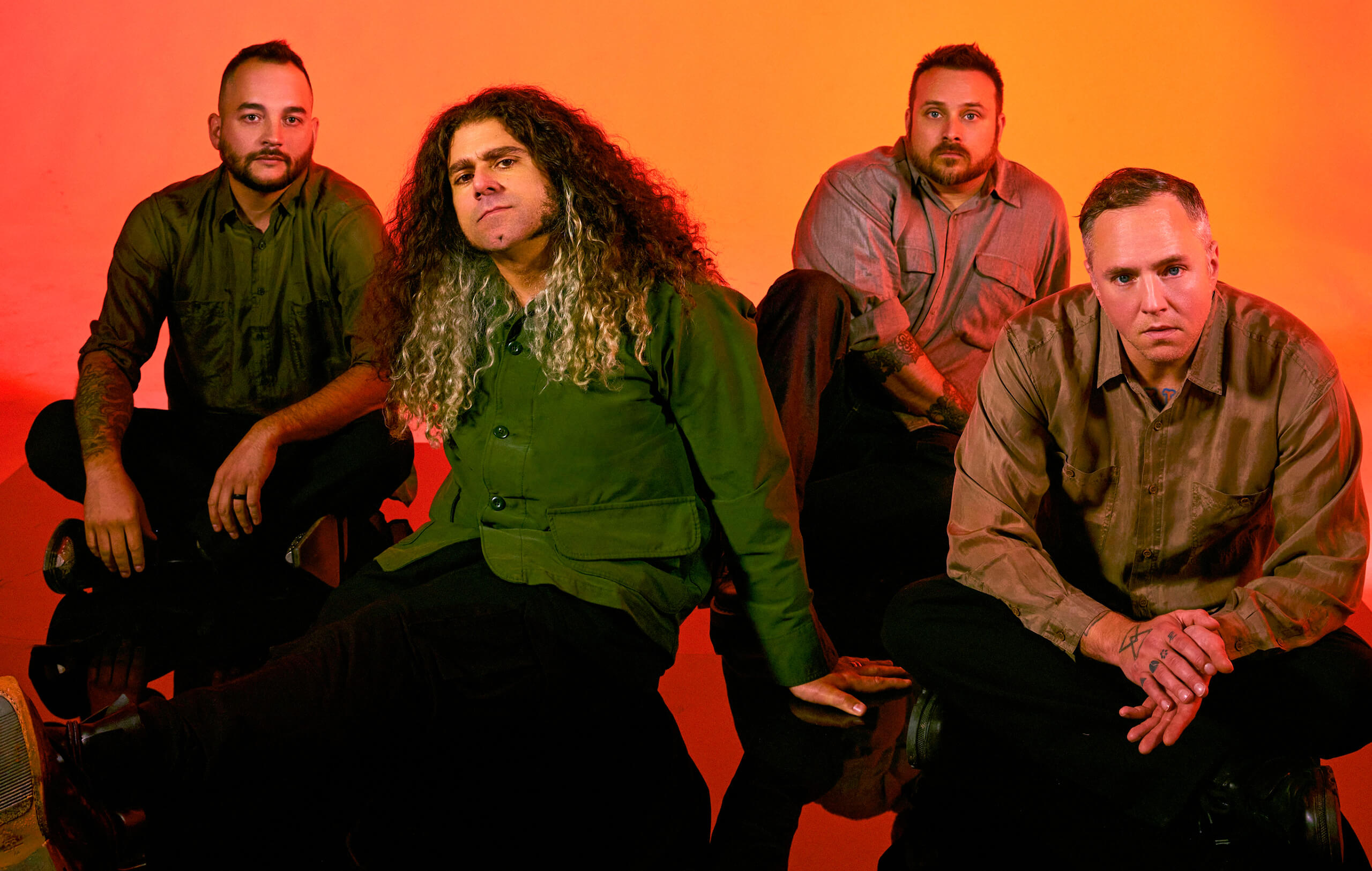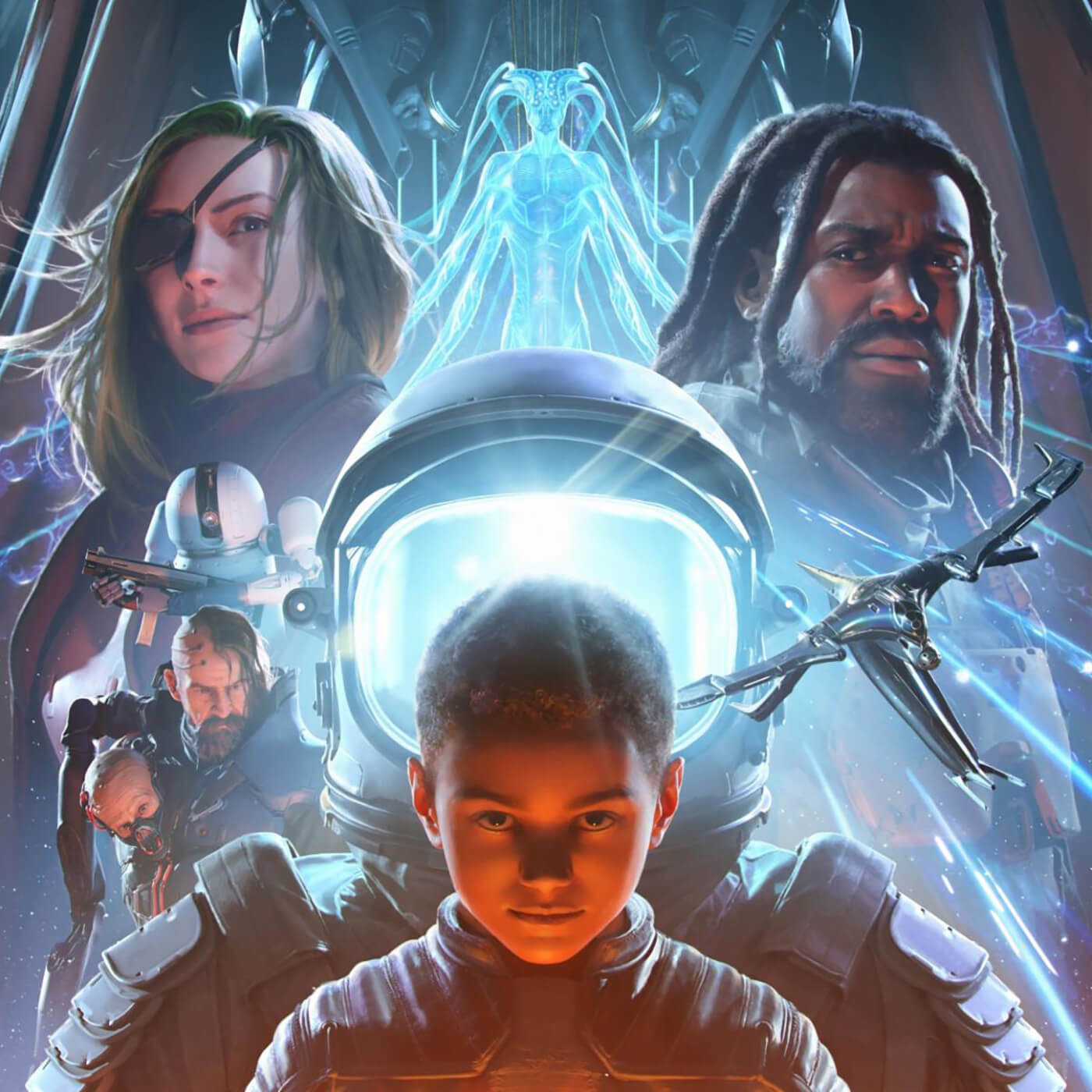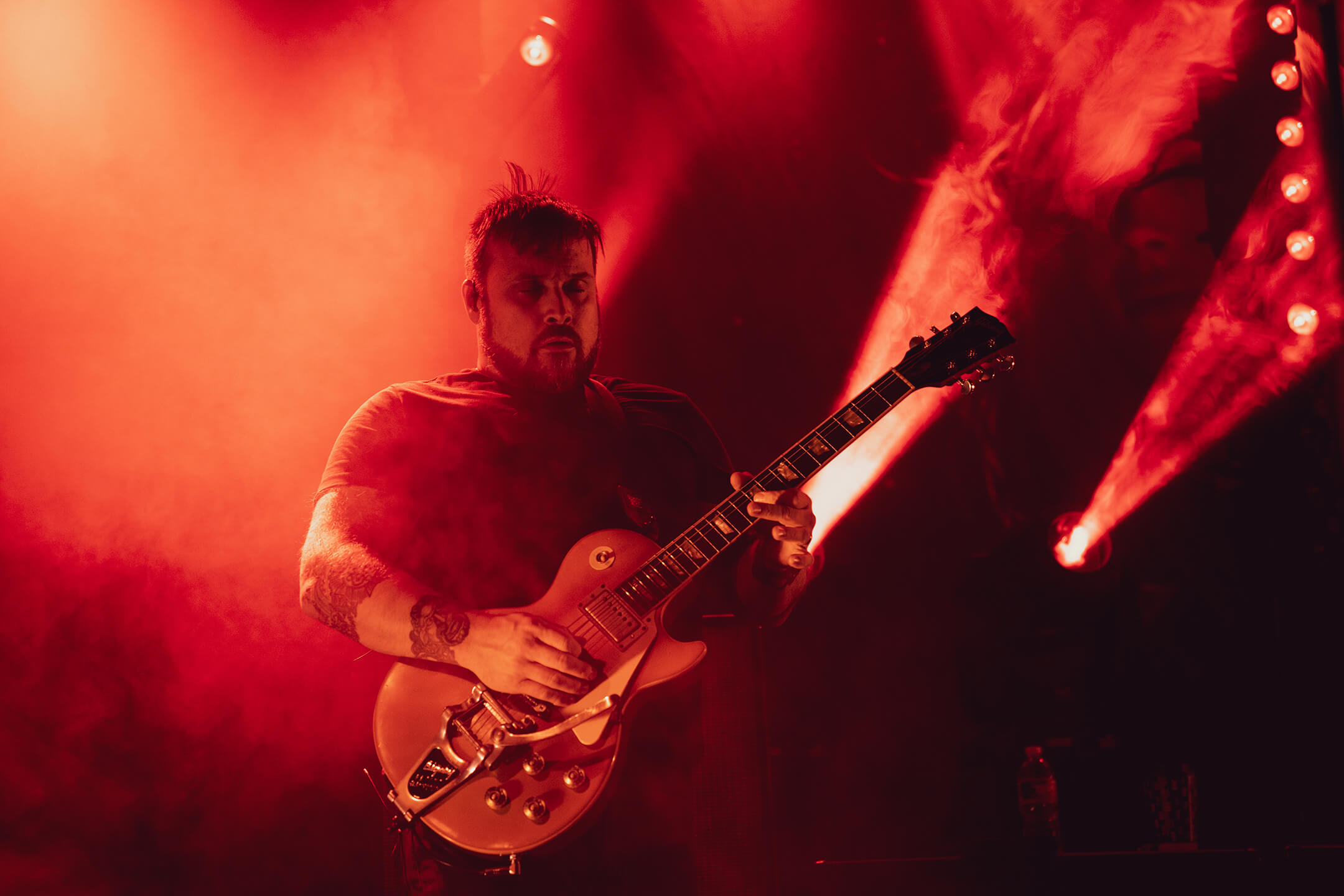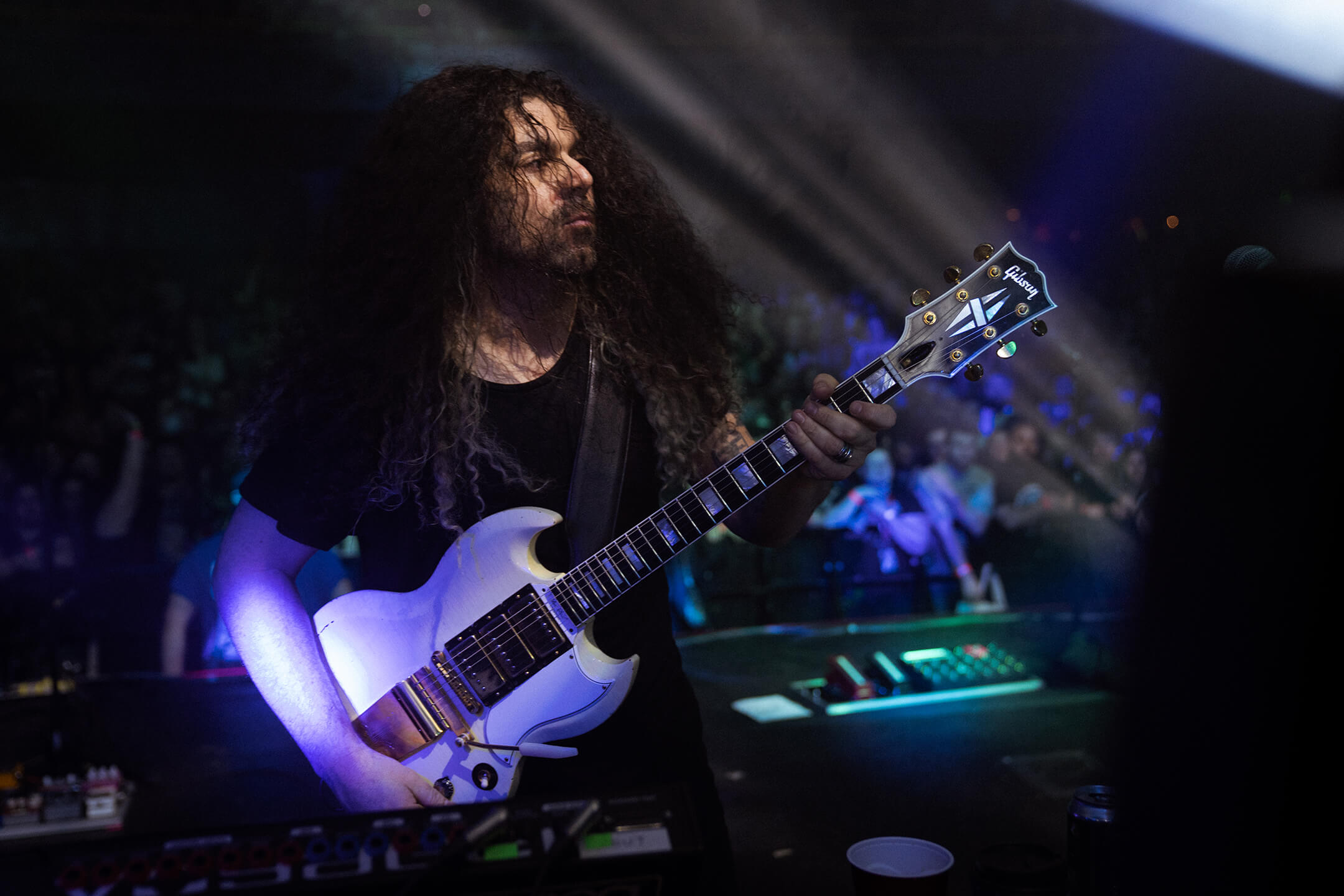“It’s new territory for Coheed”: Claudio Sanchez on how they stepped into the unknown with Coheed & Cambria’s latest album
We catch up with Claudio Sanchez and Travis Stever to find out all about their latest album, writing timeless riffs in your mum’s kitchen, and being reunited with stolen guitars over a decade later.

Coheed & Cambria. Image: Alexandra Gavillet
“What is that?!” Claudio Sanchez exclaims. The frontman of Coheed and Cambria is sitting in his Brooklyn home, and has just joined a video call with his bandmate and fellow guitar player Travis Stever. Travis is in his personal studio, just 45 minutes up the road in Upper Manhattan. Over his right shoulder, there’s a poster for Iron Man 2: a masterclass in tedium that Empire once called “inessential, over-busy and mechanical”.
“A guy that worked with us – he did the radio at Sony about ten years ago – got me it,” Travis shrugs as he glances backwards. “It’s signed by AC/DC, so it’s not as much about Iron Man 2 for me. But, hey, it was a great movie.”
“Was it?” Claudio snaps back. “Was it really?”
An argument about Marvel movies and classic rock is the perfect way to kick off an interview when you’re dealing with Coheed. It’s hard to tell what the four-piece, rounded out by drummer Josh Eppard and bassist Zach Cooper, are first and foremost: comic book geeks or music nerds.
Sonically, they mine from all over the place. Even though they debuted twenty years ago, they’re still yet to be pigeonholed, folding cues from prog, metal, emo and post-hardcore into their canon. Meanwhile, conceptually, nine out of Coheed’s ten albums follow a comic-book-style story arc called The Amory Wars. It’s a sprawling, almost incomprehensible narrative that’s only grown more intangible with every instalment. What started out as a sci-fi melodrama about young Claudio Kilgannon and his parents, Coheed and Cambria, is now a mythology laden with prequels, metacommentary and demonically possessed bicycles. It’s weird.
Both USPs return on new album Vaxis II: A Window of the Waking Mind. If you’re just tuning in to see what eclectic rock sounds will tickle your ear, you’re in for a lovely time: possibly Coheed’s finest hour in a decade and a half. First number proper Beautiful Losers – named after the band Travis and Claudio were in together pre-Coheed – opens with a shimmering guitar lick, which is quickly flanked by high-flying falsetto vocals.
Comatose taps into a weird tech-punk vibe with its wonky chords and riffs, before A Disappearing Act declares “Fuck it!” and goes full dance rock, synths joyously blaring.
“It’s new territory for Coheed,” Claudio says of the track, “if not necessarily for myself. I had a project called Prizefighter Inferno, which was primarily electronic-based. It’s not odd for us to step outside of the comfortable framework that most would consider the Coheed way.”

The best, however, comes from Vaxis II’s closing trilogy: Ladders of Supremacy, Rise Naianasha (Cut the Cord) and the behemoth of a title track. Up until this trio, the album’s been a cavalcade of genre-spanning yet concise rockers: a direct response to what Claudio considers the excessive length of 2018’s 80-minute Vaxis I: The Unheavenly Creatures. “In hindsight, I think it’s because that was our first attempt at producing a record ourselves,” he rationalises. “We were so excited that we threw everything onto the album.” Vaxis II, on the other hand, reserves its extravagance for that three-song grand finale.
Ladders… is a guitar-driven metal symphony, tucking and diving from skull-bashing chords to harmonic leads to tremolo picking before the first verse even dawns. Rise… follows as a prog/pop giant, then comes Window… and its nine minutes of acoustic-cum-electric-cum-synth-backed pageantry.

Off the map
Vaxis II is all over the map in the best way. The same can’t be said of the guitars that Claudio and Travis used. The frontman tracked predominantly using Gibson SGs, paramount among which was a 1990s Special model that was stolen from him in 2003. He didn’t get it back until 2017, after a fan somehow acquired it and shared the discovery on social media. “That’s now the guitar that I have here in my work area,” Claudio smiles, gesturing to all the musical equipment that surrounds him in his house’s spare room.
Travis, meanwhile, used his 2010 Les Paul Goldtop. “I just had that [guitar] at home during the pandemic,” he explains. “That’s basically what I used for everything during that time. It wasn’t until Coheed went out on tour for the first time in however long that I was able to switch out what guitars I had at home.”
The to-the-point album the band ended up making may be the antidote to Vaxis I’s self-indulgence, but the story picks up exactly where Coheed left off in 2018. Vaxis II’s predecessor was, essentially, a soft reboot of the entire Amory Wars arc. The first four albums in the series – The Second Stage Turbine Blade through to 2007’s Good Apollo, I’m Burning Star IV, Volume Two – told the tale of Claudio Kilgannon, Coheed and Cambria. In 2010, they made a prequel with the same trio of characters called Year of the Black Rainbow. Then, the 2012 and ’13 Afterman duology served as a spinoff, before 2015’s The Color Before the Sun became the first (and, thus far, only) Coheed album to deviate from that thematic universe.

Returning to The Amory Wars four years ago, the goal was to tell the story of a new generation. Vaxis I introduced Nia and Nostrand, who are incarcerated on a prison planet called The Dark Sentencer and fighting for the safety and security of their unborn child, the eponymous Vaxis. Vaxis II picks up with a plotline about the young family “on the run from tyrannical forces”. Getting more storyline details out of Claudio is like trying to get orange juice by squeezing a melon. “I can’t tell you any more, because it’ll be a spoiler!” he laughs.
What Claudio does open up about, though, is the personal importance of switching to this brand new story arc. The frontman was only 17 when he co-founded the band. A longtime comic book fan, he decided to integrate the medium’s penchant for winding, neverending stories into his music. The Amory Wars’ Claudio was, unsurprisingly, an avatar for the real-life Claudio, and the story the character embarked on was the musician processing the experiences of his own adolescence.

“That original arc is very much about the main character being confused about who he is and what his part in the world is,” the singer/guitarist elaborates. “He was a reflection of who I was at the time. I was trying to understand my place. I went from being raised by my parents to the figurehead of a rock and roll band; it was perplexing and confusing. Pre-Coheed, I didn’t have nearly as much attention drawn to me.”
Claudio’s life completely transformed over the course of that first Amory Wars arc. He met the love of his life, Chondra, at a show when he was 24 and she was 19. She became his writing partner, then his wife. It sounds like a dream, but it’s a dynamic that’s been tested hard. For example, Good Apollo… Volume One single Welcome Home is an embittered tirade against a lover: “You’re a whore in sheep’s clothing, Fucking up all I do!” Claudio wails over a screeching heavy metal riff.
“Chondra has been my best friend since [Coheed’s second album] In Keeping Secrets of Silent Earth,” the singer says. “We’ve had our ups and downs, which come with being partners for as long as we have. Does it get awkward? I’m sure it does for her, because some of that is in that song.”

Home comforts
The sting is that Welcome Home is now Coheed’s signature anthem, closing their every concert. Its main riff – inspired equally by Led Zeppelin and Tool – is among the best and heaviest of the 2000s, and single-handedly raised the band’s stock tenfold when the track charted in the US.
Recalls Claudio: “When I wrote that riff, I was still living in my parents’ house. I wrote it on an acoustic guitar in the kitchen, and I remember, when I came up with it, how excited I was. I was bugging out in the basement. My mum comes down to throw clothes in the laundry and I’m shouting, ‘I just wrote this massive riff!’ It’s pretty embarrassing.”
In 2014, Claudio and Chondra had a baby boy called Atlas. Naturally, the arrival transformed his father’s life, and the Vaxis era of The Amory Wars directly tackles Claudio’s responsibilities and feelings as a new parent. “I have to be this guiding light: half of a team for this new entity,” he says. “That’s basically where Vaxis is at.”
Claudio clearly has a lot to say about his newfound fatherhood. Even though he’s not one to wear his emotions on his sleeve during interviews, he plans on distilling his experiences into a total of five Vaxis albums. So, we’ve barely scratched the surface of the new Coheed era.
“There are going to be three more records,” Claudio confirms, but the band have no intention to hang things up after that pentalogy. “We have talked about potentially working on a musical,” he continues. “I got paired with a playwright and producer on Broadway to do a musical rendition of The Picture of Dorian Grey, and we’ve been talking as a band about giving it the Coheed treatment.
“Coheed will continue writing music for as long as people want it,” Claudio promises. “In fact, even if no one wants it, we’ll just give it to our friends and family.”
Vaxis II: A Window of the Waking Mind is out now via Roadrunner.
